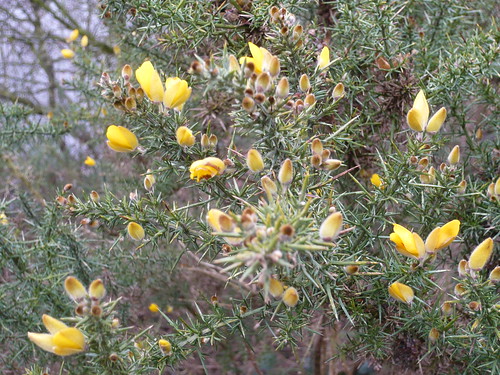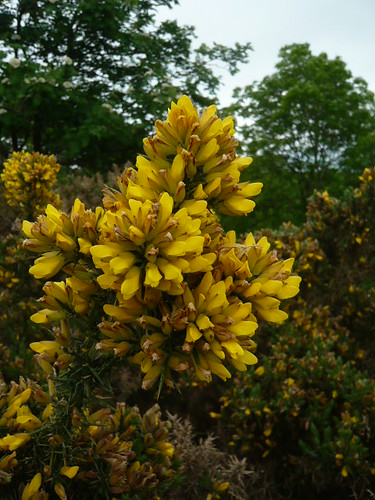Gorse with Spines and Prickles is a Weed
Ulex europaeus better known as Gorse, furze, furse or whin is a very prickly shrub of the pea family. Western gorse Ulex gallii is frequent in the western side of Britain and is relatively low growing yet robust. Dwarf gorse or Ulex minor is a low growing, sprawling shrub.
Gorse Facts
- Gorse grows wild on heath and scrub land in the UK.
- Gorse is closely related to the brooms with green stems, very small leaves and is adapted to dry growing conditions.
- Common gorse flowers yellow in late autumn and through the winter. This picture was taken at the beginning of February 2011.
- Gorse can be used as a hedge but beware the spines are really spikey.
- Gorse is a valuable plant for wildlife, providing dense thorny cover ideal for protecting bird nests. The flowers and dead wood are eaten by insects.
- Gorse grows in soils that are light, free draining and free from severe frosts.
Clearing Gorse
- Due to it’s spiny nature, Gorse forms thickets that are impenetrable to animals and humans.
- Gorse produces large numbers of seeds in seed pods which explode open increasing the area of seed distribution.
- Seed may last for up to 100 years in the soil before conditions become suitable for germination.
- For controlling small plants hand weeding is an effective method.
- Other labour intensive methods of gorse control for larger plants include digging, slashing and cutting.
- Burning can also be done, but stimulate more plant growth.
- Herbicide treatment after spring flowering is a good time to carry out a gorse control programme.
- Cutting and stump ‘pasting’ (treating the stump with chemicals) is also effective.
Read about other Prickly Shrubs


One thought on “Gorse with Spines and Prickles is a Weed”
Comments are closed.